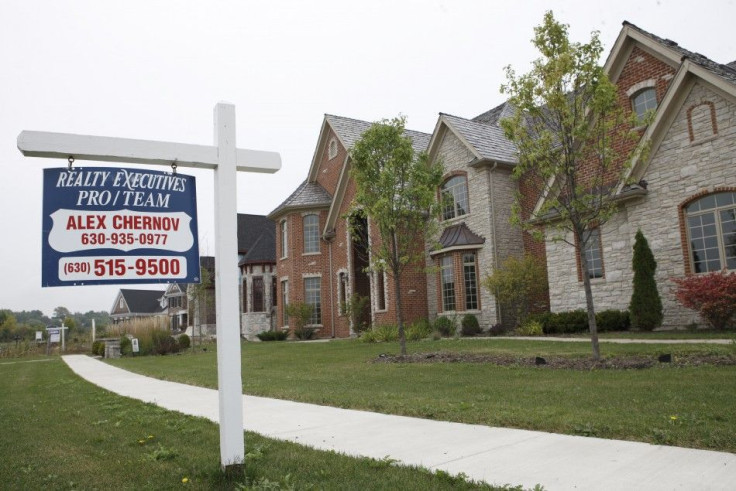Mortgage Rates - Can They Drop Even More?
Analysis

When you live in the metropolitan New York City area, you attend dinner parties, and these days the question yours truly gets the most, given connections to the financial community, is not what one would think.
No, it's not about the global financial crisis or the status of the U.S. economic recovery: it's about home mortgage interest rates. Everyone, or at least every young couple married / about to be married / or married and starting a family is on the fence, or so it seems, regarding whether to buy a home, or if they own a co-op / condo, whether to trade up.
Most appear to be convinced that median home prices in the Metro New York area have bottomed or are near a bottom.
Home mortgage interest rates, however, are another story. Most were certain last year that interest rates had gone about as low as they could go -- roughly 4 percent for a 30-year, fixed-rate mortgage.
But then rates kept falling, and have seen dropped below 4 percent.
The average fixed rate for a 30-year mortgage for borrowers with good credit has declined to 3.92 percent, according to data compiled by bankrate.com.
What's more, the average fixed rate for a 15-year mortgage has dropped to 3.28 percent, from 3.29 percent last week. The average rate for a 5/1 ARM is 2.88 percent.
The compelling question for prospective home buyers obviously is -- from a strictly home mortgage interest rate standpoint, all other factors being equal, and assuming you have a good credit rating -- now a good time to consider locking in a 30-year or 15-year fixed rate for a mortgage?
Interest rates may continue to drift lower, but a 30-year fixed rate at/near 3.92 percent is very low for the United States in the modern era (since 1960).
Really Low Mortgage Rates
What's pushing home mortgage rates lower? Home mortgage interest rates are primarily driven by market forces, and those forces imply less demand for capital, which decreases the price of money, including home mortgage rates.
Further, despite the U.S. government's large budget deficit, the 10-year U.S. Treasury note is down to 1.88 percent and that's pushing companion interest rates, or other long-term yields, lower, as well.
What's driving the 10-year U.S. Treasury note's interest rate and other rates lower? Three factors.
First, European government debt concerns are pushing institutional investors out of bonds in debt-laden European countries and in to safe havens, and U.S. Government bonds represent one preferred asset.
That may seem like a contradiction: investors rushing in to by U.S. government bonds at the same time most in political circles are expressing concern about the U.S.'s large budget deficit and national debt.
However, at least for now, institutional investors remain confident in the U.S. government's ability to pay its debt -- confidence in the faith and credit of the federal government and they view U.S. Treasuries as a safe haven -- practically as good as having a cash position. That buying of bonds has lowered the U.S.'s debt servicing costs and has lowered home mortgage rates: when low-risk Treasury interest rates drop, slightly higher-risk mortgage rates tend to drop as well.
Second, the below-trend U.S. economic recovery and concern about a slowdown in the global economy has reduced the demand for capital globally -- many companies/institutions outside of selected banks are rolling in cash -- and that's helped lower home mortgage rates, as well. Essentially, investors see some, but not many, promising places to deploy capital -- business investments where they're likely to net a high rate of return. As a result, they're rotating (also called parking) money in U.S. Treasuries and other safe instruments, and that's also helping to push down mortgage rates.
Third, the all-important long-term view is further depressing interest rates. Institutional investors -- the big guns including hedge funds, mutual funds, and investment funds -- say the United States is likely to be a preferred place to park funds for one, two, three years etc., and that's also putting downward pressure on interest rates.
Again, point three may seem like a paradox -- a safe haven U.S. amid large budget deficits -- but it's not when viewed through the lens of institutional investors and the trillions of dollars they manage. If you had a choice, where would you invest your bond money? Europe? Japan? Russia? China? Or the United States? Point: the U.S. remains the least worst option after all geopolitical risk factors are considered.
Housing: Time to Commit to a Purchase?
Of course, there are many factors in the home purchase decision, including where prices are headed in the next year. Many cities in the U.S. are experiencing soft home sales, and prices could remain sluggish in these areas for at least the next two quarters, and probably longer.
That said, if you've spotted the dream house you must have, or are otherwise committed to buying, home mortgage interest rates are low -- advantageous is another word.
Meanwhile, the refinancing decision is obvious enough: for most refinancing packages, if you can lower your interest rate by about 1.5 percentages points or more, it makes sense to refinance.
Mortgage Rate Analysis: If you're basing your home purchase decision solely on interest rates, the risk/reward scale is tipped in favor of a home purchase. Here's why:
Do a risk/reward analysis favored by former U.S. Treasury Secretary and Citigroup Director Robert Rubin.
Evaluate the probability of the 30-year, fixed-rate mortgage rising from 3.92 percent and the probability of it falling over the next six months.
Rates could fall to, perhaps, 3.75 percent or 3.70 percent, a reduction of about roughly 15 to 20 basis points. Rates could also rise to five percent or 5.25 percent, or even higher. Based on historical precedent, there is more upside risk than downside gain -- and that argues for locking-in a fixed rate now.
© Copyright IBTimes 2025. All rights reserved.




















